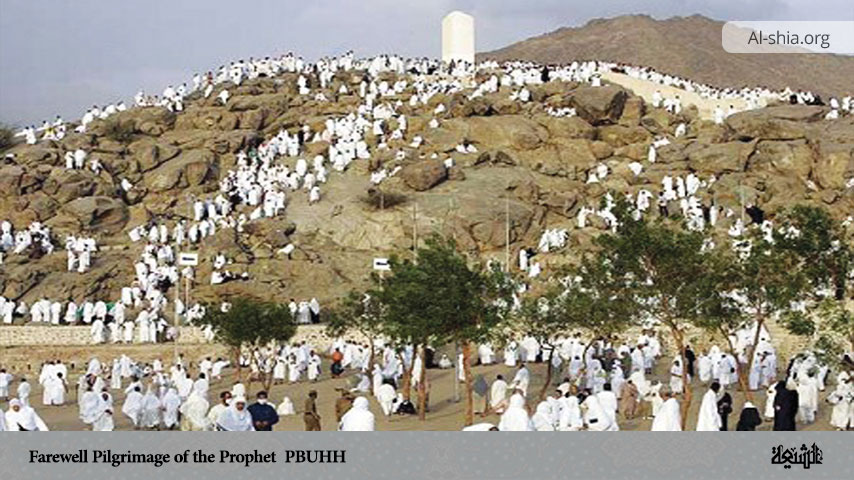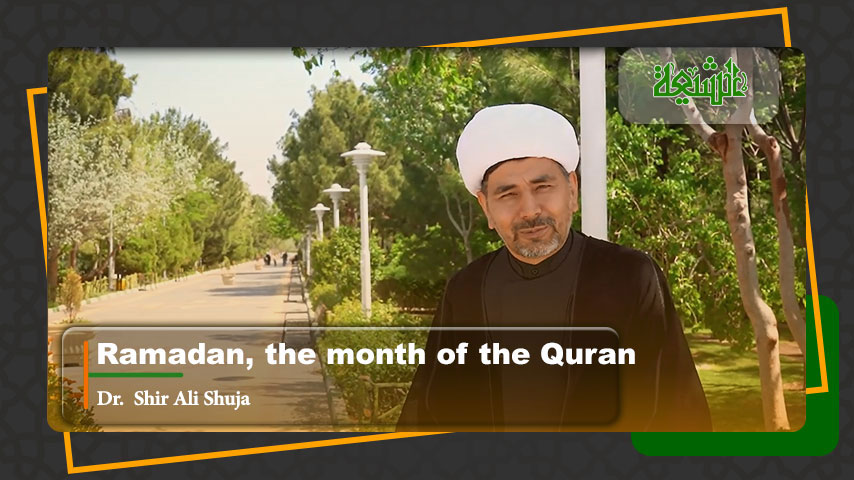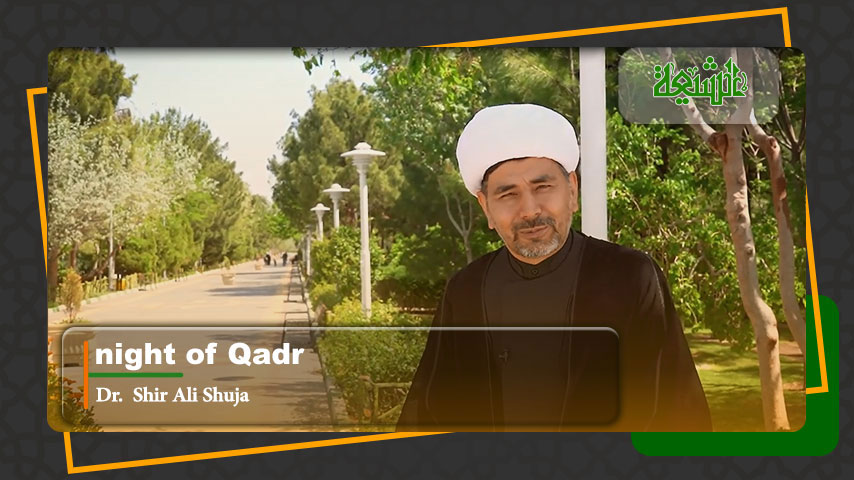The Farewell Pilgrimage (Romanized: Ḥijjat al-Wada’) refers to the one Hajj trip performed by Prophet Muhammad in the tenth year of Hijrah, following the Conquest of Mecca[1]. Since this pilgrimage took place in the last year of the Prophet’s life[2], and he (PBUHH) made farewell to people, it became known as Farewell Pilgrimage (Hijjat al-Wada’). It is pertinent to mention that this pilgrimage is also referred to Hajjat al-Balagh (i.e., Hajj of declaration) since the verse of declaration (al-Tabligh Verse) was revealed to the Prophet (PBUHH) while returning from that journey[3]. Similarly, another name for that hajj of the Prophet (PBUHH) is Hajjat al-Islam, since it is the only hajj of the Prophet during the rule of Islam and its rituals were practised according to Islamic law[4].
Public Invitation
Therefore, the Holy Prophet (PBUHH) enjoined his companions to publicize this among every Arab tribe. With this publicity, people with a unique excitement were rushing to Medina from every suburb of the Arabian Peninsula in order to accompany the noble Prophet (PHUHH) for the Hajj rituals. Meanwhile, the Prophet appointed Abu Dujana al-Ansari as the Governor of Medina during his absence.
Departure to Mecca
On 25 Dhu al-Qa’dah, 10 A.H (c. February 632), the noble Prophet (PBUHH) with hundred camels meant for the sacrifice left Medina towards Mecca[5]. Despite the fact that there was an outbreak of an epidemic at Medina in that year, which prevented some Muslims from accompanying the Prophet on his journey, a great number of Muslims still accompanied him to Hajj. The historians estimated the Prophet’s entourage between forty to one hundred and twenty-four thousand. This figure was only for those who accompanied the Prophet (PBUHH) from Medina. The total number of participants from other places (such as the people of Yemen who came along with Hazrat Ali) to perform the Hajj rites with the Prophet (PBUHH) that year was much greater than these estimated figures.
Unique Features of the Journey
When comparing the Prophet’s Farewell Pilgrimage with his other journeys, it could be established that none of his journeys had the unique characteristics of his Farewell Pilgrimage. This is because the Prophet (PBUHH) had neither publicized nor requested others (i.e., those who had the capability) to accompany him on any of his journeys. In addition, all his wives had never accompanied him on any journey except during the Farewell Pilgrimage.
Because the noble Prophet (PBUHH) based on divine inspiration considered this journey as his last trip, he delivered sermons at different places upon coming across the Muslims. The Prophet (PBUHH) in these sermons presented the most crucial instructions in the form of his last will in order to prevent people from going astray after him.
Delivered Sermons
According to historical sources, several sermons were delivered by the Holy Prophet (PBUHH) on this trip (i.e., the Farewell Pilgrimage) at the following places respectively. These include:
- On the 8th of Dhu al-Hijjah (Day of Tarwiyah) at Mecca
- On the 9th of Dhu al-Hijjah at the Mount of Arafat[6]
- On the 10th of Dhu al-Hijjah (Eid Adha day) at the Mina
- On the 11th of Dhu al-Hijjah at the Mina
- On the 18th of Dhu al-Hijjah at the Ghadir Khumm
Unfortunately, details of this trip, particularly of those events that occurred before the Muslims returned to Mecca were not documented in the books of history. However, several sermons of the noble Prophet (PBUHH) in Mecca, which were preparatory grounds for the great Ghadir congregation were elaborately documented.
On the 4th of Dhu al-Hijjah, the sermon of the Prophet (PBUHH) focused on the disobedience of the companions to his order. It was documented in Sahih Bukhari and Sahih Muslim that before the Hajj rituals, the noble Prophet (PBUHH) instructed his companions; those who did not bring along a sacrificing animal to consider their Ihram as an Ihram for Umrah Tammattu. Then, they should thereafter perform the Tawaf (i.e., circumambulation of the Ka’aba); Sa’ay (i.e., walking between the hills of Safa and Marwah); shaving off the hairs and then putting off the Ihram. Thereafter, for the performance of Hajj-e-Tammattu during the period of Hajj, they should put on the Ihram again. This directive seemed to be illogical to some companions and they inquired about what would be considered permissible for them when they were out of the Ihram clothes. The Prophet (PBUHH) replied to them that everything that was previously prohibited due to Ihram now becomes permissible for them.
It was documented in the Sahih Muslim that A’isha said: “The Prophet (PBUHH) on the 4th or 5th of Dhu al-Hijjah entered my room while the traces of anger were apparently noticed on his faces and I said: “O Messenger of Allah, who angered you? May Allah put him in Hellfire.” In the Musnad Ahmad, it was mentioned that the noble Prophet (PBUHH) in response to A’isha said: “Why should I not be angry while I instructed my companions but they did not obey my instructions.”
In Sunan Ibn Majah (one of the six Sunni reliable books of Hadith), Jabir Ibn Abdullah reported that when the holy Prophet (PBUHH) instructed the companions to put off their Ihram, they disobeyed him while saying: “O Messenger of Allah, are you commanding us to put off our Ihram and then we have a sexual relationship with our wives?”
This narration was elaborately documented in the Shia sources as well. For instance, this same narration in Sunan Ibn Majah and Musnad Ahmad above was also narrated from Imam Sadiq (PBUH) but with the following additions: “A man standing in front of the Prophet (PBUHH) said: “O Messenger of Allah! Are you commanding us to go to Arafat while water (from a ritual bath) is dropping from our heads?” The Prophet (PBUHH) after this objection said to him: “Verily, I know quite well that you will never believe in it at all”
At this point, it is pertinent to raise the question that what was the motive of the companions for disobeying the Prophet’s order of putting off their Ihram. It is documented in Sahih Bukhari that the Arabs, particularly the Quraysh (in the Jahiliyyah period) believed that if a person during the period of Hajj put off the Ihram after his Umrah (i.e., Lesser Hajj) and thereafter put it on again for the Hajj rituals, he was considered as the worst dissolute person. In their view, putting off the Ihram clothes (during the Hajj period) is considered the worst sin on the surface of the earth. In light of this, when the noble Prophet (PBUHH) ordered them to put off their Ihram, it was very difficult for the Arabs to abide by it due to a wrong belief they had.
On the contrary, the Qur’an clearly opposes such disobedience and instructs the believers to take whatever he enjoins: “Take whatever the Apostle gives you, and refrain from whatever he forbids you[7].” Also, He says: “But whoever disobeys Allah and His Apostle and transgresses the bounds set by Allah, He shall make him enter a Fire, to remain in it [forever], and there will be a humiliating punishment for him[8].”
Another narration from Ibn Abbas said: “I swear by Allah that the Messenger of God (PBUHH) did not instruct (his companions to put off their Ihram) during the month of Dhu al-Hijjah but in order to stop with that the custom of the polytheists.” In continuation, Ibn Abbas said: “They (polytheists) would not put off their Ihram clothes until all Hajj rituals are completed and the sacrificing animals were slaughtered.”
Similarly, Ibn Hijr in his commentary on Sahih Bukhari and ‘Ainī in his book titled ‘Umdat al-Qari’ reported the same tradition. And it was stated that the Prophet’s primary objective for this commandment was the eradication of the Polytheists’ belief.
A very interesting point is that if the companions during his lifetime could boldly oppose the Messenger of Allah (PHUHH) in such a disrespectful manner, then it is not strange at all that the Prophet’s injunction on the succession of Ali (PBUH) could be disobeyed (disregarded) after his demise.
One of the most important sermons of the noble Prophet (PBUHH) during his farewell pilgrimage was the sermon he made at the Ghadir Khumm[9]. Unfortunately, there are no details on the sermon of Ghadir in the Sunni sources, but only a few lines on it were discussed. The worst scenario is that despite the great importance the noble Prophet of Islam (PBUHH) attached to this event and the presence of over one hundred thousand Muslims and the reports of over one hundred and twenty companions on this historical gathering, no traces of the Ghadir event was documented in the Sahih Bukhari; the most essential Sunni source and the most authentic book after the Qur’an (as they claimed). On the contrary, he made mention of it in his other work, titled “Tarikh Saghīr”. Similarly, the reports of the event were truncated in the Sahih Muslim. The beginning of the event and its conclusion were removed but only less than two lines on it were mentioned. On the contrary, almost a page of this sermon was documented in the book titled “Mu’jam al-Kabir”.
Conclusion
The Farewell Pilgrimage, or Hajj, of the Prophet Muhammad (PBUHH) in 632 CE was a profound and significant event in Islamic history. This pilgrimage was his last visit to Mecca, and during it, he delivered the famous Farewell Sermon and some other sermons.
The Farewell Pilgrimage served not only as a religious journey but also as a platform for Prophet Muhammad (PBUHH) to deliver his final guidance to his followers. This event marked a pivotal moment in Islamic history, leaving a lasting legacy on the teachings and practices of Islam.
References:
[1] . cf. Sayyid Sa’eed Akhtar Rizvi, The Life of Muhammad: The Prophet.
[2] . Al-Waqidi, Muhammad ibn ‘Umar, al-Maghazi, vol. 3 p. 1088-1089; al-Kulayni, Muhammad ibn Ya’qub, al-Kafi, vol. 4 p. 244
[3] . Ibn Hisham, ‘Abd al-Malik. Al-Sira al-Nabawiyya, vol. 4 p. 253; al-Mas’udi, Tanbih, p. 275-276.
[4] . Ibn Sa’d al-Hashimi, Muhammad, Al-Tabaqat al-kubra, vol. 2 p. 172; al-Kulayni, al-Kafi, vol. 4 p. 248
[5] . Al-Waqidi, Muhammad ibn ‘Umar, al-Maghazi, vol. 3 p. 1089; al-Tusi, Muhammad ibn al-Hasan, al-Tahdhib al-ahkam, vol. 5 p. 454,
[6] . “Sunan Abi Dawud; Hadith no. 1906; Book 11, Hadith 186; English Translation – Book 10, Hadith 1901”; “Sunan Ibn Majah, Hadith no. 3074; In book – Book 25, Hadith 193; English Translation – Vol. 4, Book 25, Hadith 3074”; Sahih Muslim, book 15 (The Book of Pilgrimage), hadith 159
[7] . Qur’an 59: 7.
[8] . Qur’an 4: 14.
[9] . Ibn al-Maghazili, ‘Ali ibn Muhammad, Manaqib al-imam ‘Ali b. Abi Talib, p. 16-18; al-Amini, Abd al-Husayn, al-Ghadir, vol. 1 p. 508-541
















